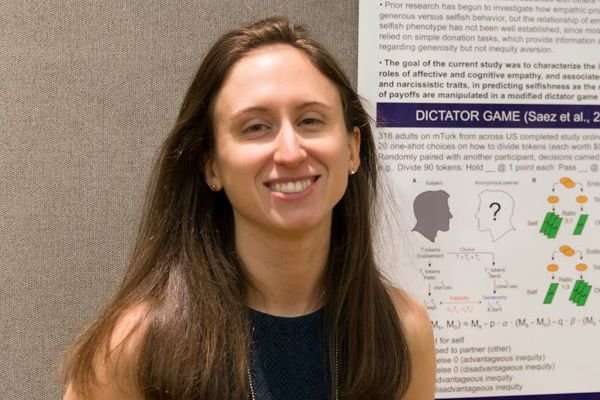For the first time, a neural link between altruism and empathy toward strangers

Giving up a kidney to a stranger requires a certain sense of selflessness, what's come to be known in social science as extraordinary altruism. University of Pennsylvania psychologist Kristin Brethel-Haurwitz wanted to understand the connection between this trait and empathy, specifically empathy for distress emotions.
Using fMRI scans, Brethel-Haurwitz and colleagues from Georgetown University discovered that these altruistic kidney donors were more sensitive to a stranger's fear and pain than a control group, with activation happening in a brain region called the anterior insula, which is key for emotions like pain and disgust. This research, published in Psychological Science, is the first to show a clear link between real-world altruism and empathy for the pain of strangers.
"This can be hard to study in a lab because it's based on self-reporting and inherently, in that process, there may be biases," says Brethel-Haurwitz, a postdoctoral fellow in Penn's Department of Psychology in the School of Arts and Sciences. "So we took this population of real-world altruists, people who have donated a kidney to a stranger, to try to better understand their empathic process."
It was important for the researchers to get at what Brethel-Haurwitz calls "pure human altruism," a selfless act taken without expectation of anything in return. Donating a kidney is costly and painful and as such altruistic kidney donors often get pushback, not praise, for giving their organ to someone they don't know. Also, the process is often anonymous and nonreciprocal, meaning they may never know or meet the organ recipient. These factors made the group a strong population for such work.
For this study, Brethel-Haurwitz and colleagues recruited 57 people, 29 extraordinary altruists and 28 healthy adults who had not donated a kidney, as the control. After answering a questionnaire to determine baseline empathy, each individual was matched with a stranger as a study partner and then completed a series of 90 task trials, 30 each during three 12-minute blocks.
During the first two blocks, the participant viewed a live video feed of her partner receiving painful pressure to her right thumbnail while researchers monitored brain activity via functional magnetic resonance imaging (fMRI). In Round 3, the participant personally experienced the thumbnail pressure as an fMRI tracked brain function. To differentiate between neural activity related to pain and that related to fear, each trial had periods of anticipation (half in each block were "safe," meaning participants knew no thumb pressure would occur, and half were "threat" trials with the potential for pain) followed by a period during which pain was administered or omitted.
Overlaying the two resulting fMRI brain scans—one made during the altruist's pain, the other while she observed someone else in pain—provided an unmistakable link between the selflessness trait and empathy.
"Prior research of ours has shown that these donors demonstrate more neural sensitivity to distress, specifically fear, in other individuals. The amygdala was more active when they viewed photos of people in fear, but there wasn't someone actually in distress in front of them," Brethel-Haurwitz explains. "Here, when the altruists are feeling pain and watching the pain of others, the neural activity matches pretty closely."
What's more, the results confirm the researchers' theory about the role of the anterior insula, a bilateral region of the brain considered a hub of neural activity. "It's thought to be a salience detector, so, when something important is happening, it's more likely to be active," Brethel-Haurwitz explains. "It's also been shown to activate in prior studies of empathy for pain, so we hypothesized it would come up here, though we weren't as certain we would see it for fear." Enhanced self-other overlap in the anterior insula in altruists for both pain and fear suggests that this region may respond more generally to distress-related emotions.
Next Brethel-Haurwitz plans to take her research in a new direction, working with Penn professor Joseph Kable on why selfish individuals make selfish decisions.
Work with the altruistic donors will continue at Georgetown, led by Abigail Marsh, Brethel-Haurwitz's former doctoral advisor.
"It's hard to get at any pure aspect of human behavior," Brethel-Haurwitz says. "But, once you do, you get closer to a greater understanding of what happens in the brain when people take certain emotion-driven actions."
More information: Kristin M. Brethel-Haurwitz et al, Extraordinary Altruists Exhibit Enhanced Self–Other Overlap in Neural Responses to Distress, Psychological Science (2018). DOI: 10.1177/0956797618779590















